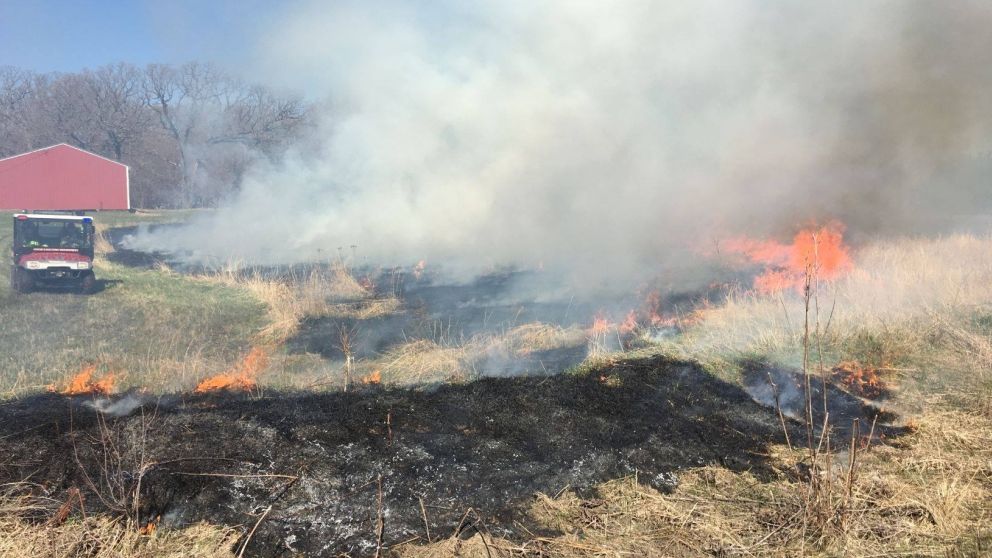Answering Your Burning Questions About CRP Burns

For thousands of years, fire has been a natural and effective method for improving wildlife habitats. Today, we still use fire to meet some of our land management goals, but instead of letting a fire happen from a lightning strike, we use different strategies and tools to start and control fires so we can purposefully burn a certain area or patch of land. This practice is referred to as a controlled burn.
One type of controlled burn is what we call a CRP burn. CRP is a land conservation program administered by the Farm Service Agency (FSA). In exchange for a yearly rental payment, landowners enrolled in the program agree to remove environmentally sensitive land from agricultural production and plant species that will improve environmental health and quality.
So why would you want to burn CRP? When can you burn it? What’s a burn plan? Let’s dive in and answer some of these questions.
What Are the Benefits of Burning CRP?
Burning CRP land has lots of great advantages and can help improve your land by meeting some of your land management goals. Some benefits of burning CRP include:
- Reducing or eliminating volunteer tree pressure
- Set back competition from unwanted species such as cool season grasses that tend to encroach on native prairie
- Remove dead vegetation allowing new growth to come in easier
- Warms up the soils by allowing for more direct sunlight
- Gives the native prairie a jumpstart to the growing season
Why Does a Burn Plan Matter?
If burning your CRP land makes sense for you as a landowner and matches your goals, you’re ready to take the next step and put together a burn plan.
Typically, if you work with a company or local business to conduct your burn, they will help put together what we refer to as a ‘burn plan”. A burn plan will include items like, where fire breaks should be installed, timing of the burn which can differ depending on landowner goals, ignition plan, and where team members need to be stationed so they can monitor the fire and make sure it does not move beyond the fire breaks.
In addition, a burn plan will also include notifying people within the local communities that a burn is taking place. Some people to call include the following: the local fire department (if they are not already involved in the burn), neighboring landowners, county officials, and other emergency numbers that could be called.
When Can You Burn CRP?
Spring and Fall are typically when CRP burns take place, depending on your goals as a landowner. There are date restrictions from the Farm Service Agency (FSA) that require landowners to not conduct burns between May 15, and August 1, because it is the primary nesting season for birds. With safety and control being a top priority for most controlled burn businesses, the weather needs to be just right before they will conduct a burn. Wind speed, wind direction, temperature, dew point, moisture levels, all these environmental factors play a huge role in whether a CRP burn can happen.
Fire can be unpredictable and it’s important to have a team of professionals that know what they are doing and can conduct a safe controlled burn. With limited businesses/companies that conduct these types of burns, availability of burn teams can be tricky. In some cases, you can work with your local fire department to conduct a burn, but that will depend on the area and if they have experience with controlled burns.
At Hertz, we are very experienced in CRP burns and would love to help you decide if this is a smart investment for your property sometime in the future. Please feel free to reach out to us via phone or our website if you have questions or comments about your properties.










